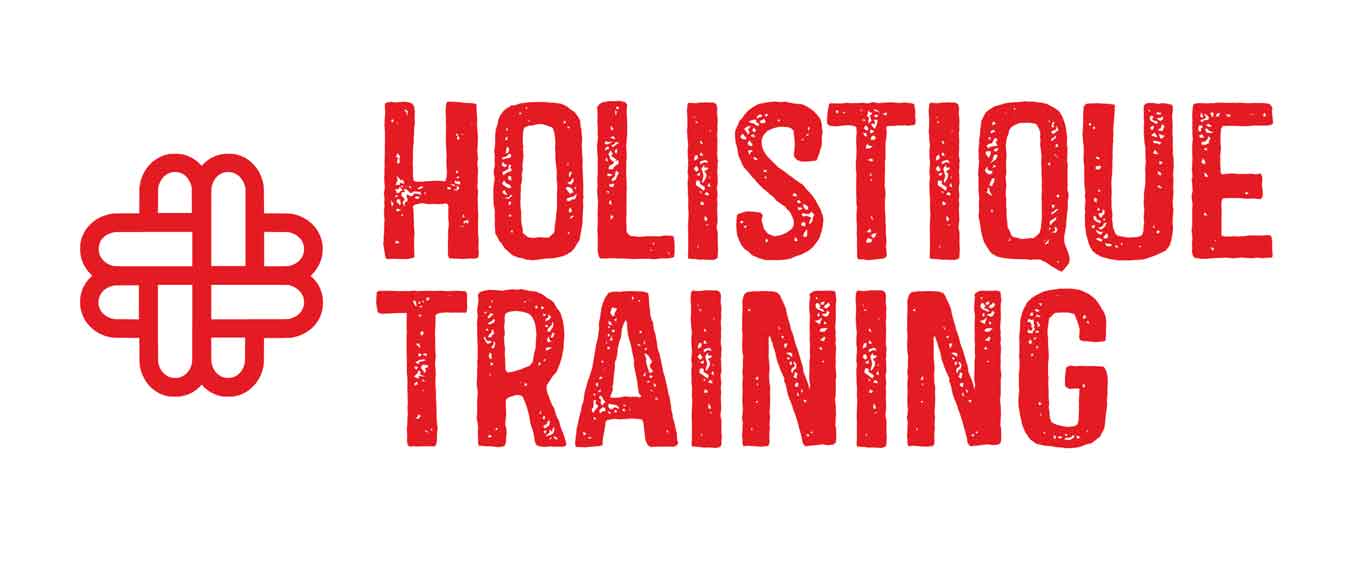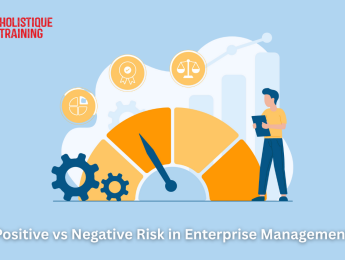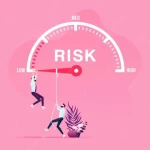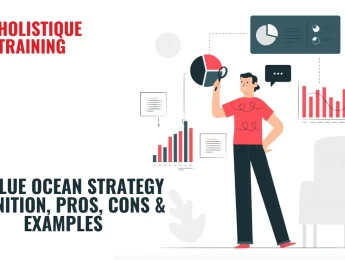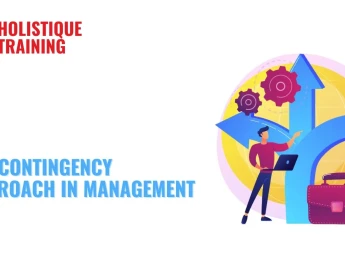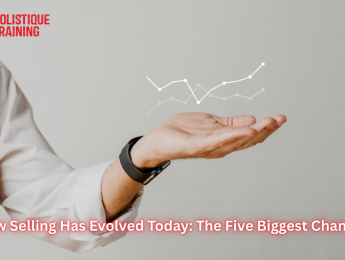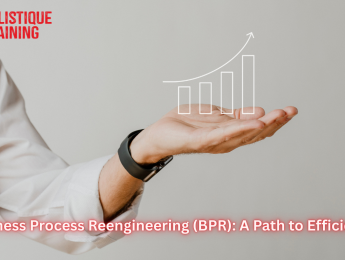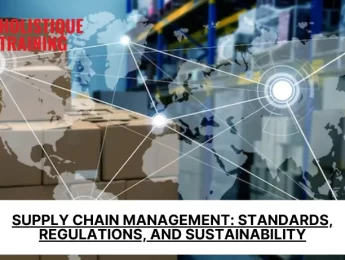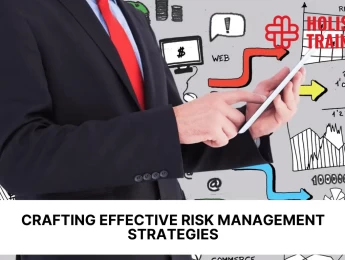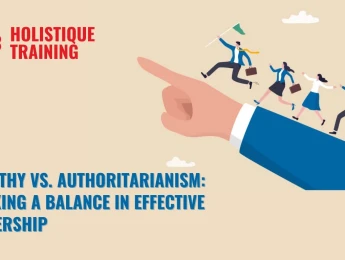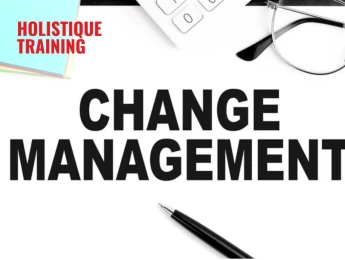- Table of Contents
- 1. Introduction: Rethinking Risk in Modern Enterprises
- 2. Understanding the Concept of Risk Polarity
- 3. Positive Risk: Leveraging Opportunity within Uncertainty
- 4. Negative Risk: Identifying and Mitigating Threats
- 5. Comparative Analysis: Positive vs. Negative Risk
- 6. Integration into Enterprise Risk Management Frameworks
- 7. Tools and Techniques toManage Dual Risks
- 8. Case Studies: Turning Threats into Opportunities
- 1. The COVID-19 Pandemic
- 2. Banking and Fintech Innovation
- 3. Climate Change and Energy Transition
- 9. Challenges in Managing Positive and Negative Risks
- 10. Conclusion:
1. Introduction: Rethinking Risk in Modern Enterprises
Risk has long been a central concern of business decision-making, yet its definition continues to evolve. According to ISO 31000:2018, risk is the “ effect of uncertainty on objectives. ” This phrasing is deliberate—it emphasises that risk can produce both positive and negative effects, shifting the conversation beyond traditional notions of danger and loss. Historically, however, most organisations treated risk exclusively as a threat - a possibility of harm, failure, or financial loss that needed to be avoided or mitigated.
In the twenty-first century, this view is no longer sufficient. Today’s enterprises operate within volatile global environments characterised by technological disruption, climate change, regulatory reform, and stakeholder scrutiny. Within this complexity, uncertainty is inevitable—but it also holds potential. A digital start-up investing early in artificial intelligence faces uncertainty, yet that same uncertainty may produce innovation, market share, and strategic advantage. Thus, risk is not inherently negative; it can also be a source of value creation.
The emergence of Enterprise Risk Management (ERM) reflects this philosophical shift. Modern ERM frameworks recognise that sustainable success requires balancing the dual dimensions of risk: negative risk , which threatens objectives, and positive risk , which creates opportunities. Organisations that understand this polarity are better equipped to navigate uncertainty strategically, rather than reactively.
Digital transformation, global interdependence, and Environmental, Social, and Governance (ESG) imperatives have made this mindset essential. Stakeholders now expect organisations to demonstrate both resilience and innovation. The future belongs to enterprises that manage uncertainty holistically—treating risk not merely as an obstacle, but as a pathway to progress.
Thesis statement: Effective Enterprise Risk Management recognises that risks can both hinder and enable strategic success, and mastering this duality is central to achieving long-term sustainability.
2. Understanding the Concept of Risk Polarity
To grasp the essence of positive and negative risks, one must first understand risk polarity—the concept that every uncertainty has two possible directions: an upside and a downside. In enterprise contexts, these are commonly referred to as upside risk (opportunity) and downside risk (threat).
- Upside risk represents situations where uncertainty could lead to beneficial outcomes—such as improved performance, market leadership, or technological breakthroughs.
- Downside risk, in contrast, involves scenarios where uncertainty results in harm—such as losses, regulatory penalties, or reputational damage.
The psychology of risk plays a crucial role in how organisations interpret these outcomes. Human behaviour is naturally biased toward loss aversion , a principle identified by Daniel Kahneman and Amos Tversky in their seminal Prospect Theory . This explains why corporate governance traditionally emphasises threat mitigation rather than opportunity exploitation. However, companies that limit risk to a defensive posture often miss transformative chances for growth.
Real-world examples illustrate this polarity vividly. Consider positive risk: investing early in emerging technologies such as green hydrogen or artificial intelligence. Early movers face uncertainty but may secure long-term dominance, as Tesla did in the electric-vehicle market. Conversely, negative risks—such as data breaches, compliance violations, or natural-disaster disruptions—demonstrate the destructive potential of unmanaged uncertainty.
Frameworks like COSO ERM (2017) acknowledge this duality explicitly. COSO defines risk management as not only the protection of value but also its enhancement. It integrates opportunity management into governance and strategy, linking risk awareness to performance objectives. This redefinition helps leaders shift from a purely reactive stance to one that is anticipatory and growth-oriented.
Understanding risk polarity is therefore more than semantics; it represents a philosophical and operational shift. Modern organisations are expected to treat risk not merely as a defensive mechanism but as a dynamic process that balances threats and opportunities through informed decision-making. In this balanced paradigm, ERM becomes a tool not just for avoiding failure , but for enabling success.
3. Positive Risk: Leveraging Opportunity within Uncertainty
Positive risk refers to uncertainties that could result in beneficial outcomes. It challenges the notion that all risks are harmful and encourages leaders to identify where uncertainty might drive innovation, profitability, or competitive advantage.
Types of positive risks vary across industries:
Market expansion through regulation:
For instance, new environmental laws may appear burdensome but can stimulate green-product development. The EU’s strict emissions standards prompted automakers to innovate electric and hybrid vehicles, creating new markets rather than restricting growth.
Technological disruption:
Automation, cloud computing, and AI carry uncertainty in cost and implementation—but when managed well, they yield efficiency and productivity gains.
Strategic mergers and acquisitions:
Acquiring another company carries integration and cultural risks, yet it can also create economies of scale or entry into untapped markets.
The Project Management Institute (PMI) categorises opportunity responses into four strategies:
- Exploit: take deliberate action to ensure the opportunity happens (e.g., allocating additional resources).
- Enhance: increase the likelihood or impact of the opportunity.
- Share: partner with another entity to capitalise jointly.
- Accept: acknowledge the potential benefit without active pursuit.
These strategies provide a structured way to embrace uncertainty rather than suppress it.
A classic illustration is Tesla’s early investment in electric-vehicle infrastructure. When the company began producing EVs, the market was highly uncertain, and charging networks were nearly nonexistent. Rather than waiting for governments or competitors, Tesla exploited the risk by building its own charging ecosystem, transforming a constraint into a differentiator.
In the pharmaceutical industry, positive risk management appears in accelerated R&D. Companies using AI analytics to predict molecular interactions or identify patient subgroups accept uncertainty in data modelling but often achieve faster drug-discovery cycles and higher success rates.
To evaluate the value of positive risk, organisations may employ metrics such as:
- Return on Investment (ROI) potential
- Innovation index or pipeline growth
- Market timing advantage
Positive risk, when cultivated within ERM, becomes a catalyst for strategic evolution. According to a 2024 Harvard Business Review article, companies that integrate opportunity management into risk governance outperform peers in innovation output by 25–30%. Such findings confirm that viewing uncertainty through a dual lens enhances organisational agility and competitiveness.
Ultimately, positive risk reminds leaders that uncertainty is not the enemy—it is the raw material of progress.
4. Negative Risk: Identifying and Mitigating Threats
While opportunities deserve attention, negative risks remain a central focus of Enterprise Risk Management. Negative risk represents potential events that could prevent objectives from being achieved, leading to financial, operational, or reputational damage.
Common categories include:
- Strategic risks: changes in market demand, disruptive competitors, or failed business models.
- Operational risks: process breakdowns, supply-chain failures, or technology outages.
- Financial risks: interest-rate volatility, liquidity crises, or inflation shocks.
- Compliance risks: breaches of laws, sanctions, or data-privacy violations.
- Reputational risks: brand erosion due to misconduct or social backlash.
The classical risk-response framework provides four core strategies:
- Avoid: eliminate the risk by discontinuing the activity.
- Mitigate: reduce likelihood or impact through controls or redundancy.
- Transfer: shift the exposure through insurance or outsourcing.
- Accept: tolerate the residual impact within the risk appetite.
Real-world cases show why negative-risk awareness is indispensable. The Boeing 737 MAX crisis revealed how inadequate risk governance—particularly around safety verification and regulatory oversight—can cause catastrophic financial and reputational losses. Another example comes from the oil and gas industry, where non-compliance with environmental standards has led to multi-billion-dollar penalties and damaged stakeholder trust.
Managing negative risk also builds organisational resilience—the ability to withstand shocks and recover swiftly. The COSO ERM Framework (2017) emphasises that threat management is not solely defensive; it enhances adaptability and continuity. According to the World Economic Forum Global Risks Report 2025, companies with mature ERM systems were 40% more likely to recover operationally within six months of a major disruption.
Therefore, addressing negative risk is not about eliminating all uncertainty—an impossible task—but about ensuring preparedness. Organisations that anticipate downside events and align mitigation with strategy not only protect value but strengthen trust, governance, and continuity.
5. Comparative Analysis: Positive vs. Negative Risk
Risk, by its nature, is neutral—it is the perception and response that determine its outcome. Both positive and negative risks are essential components of a balanced ERM system.
Criteria | Positive Risk | Negative Risk |
Nature | Opportunity | Threat |
Objective | Value creation | Value protection |
Strategy | Exploit / Enhance | Avoid / Mitigate |
KPI | Innovation ROI | Loss reduction |
Example | Investing in new technology | Cybersecurity breach |
As shown above, positive risk aims to create new value streams, while negative risk focuses on protecting existing assets. Both are vital: without the former, innovation stagnates; without the latter, survival is jeopardised.
Integrating both perspectives ensures a balanced risk culture. This is achieved through the organisation’s risk appetite and tolerance, which define how much uncertainty is acceptable in pursuit of goals. For example, a start-up may have a high risk appetite for innovation but low tolerance for financial exposure.
Moreover, opportunity management aligns directly with strategic risk management and innovation governance. Forward-looking boards treat opportunity exploration as a responsibility equal to threat prevention. By quantifying both sides of the risk equation, they allocate resources more intelligently, maintaining equilibrium between experimentation and stability.
ERM maturity depends on this dual recognition. A company focusing solely on threat reduction becomes risk-averse and may miss disruptive trends. Conversely, one that ignores downside threats may pursue reckless expansion. Sustainable success lies in harmonising both dimensions— defence and growth.
6. Integration into Enterprise Risk Management Frameworks
Global standards have evolved to incorporate both sides of risk. Three leading frameworks—ISO 31000, COSO ERM (2017), and PMI-RMP/PRINCE2—illustrate this evolution.
- ISO 31000:2018 – Holistic and Opportunity-Inclusive
ISO’s approach defines risk neutrally and emphasises that managing uncertainty involves recognising potential benefits as well as losses. It encourages leadership to integrate opportunity identification into policy, strategy, and performance objectives.
(Reference: ISO 31000:2018 Risk Management Guidelines ) - COSO ERM (2017) – Linking Risk, Strategy, and Performance
COSO reframed ERM as a performance enabler. Its structure connects risk appetite, strategy formulation, and value creation. Opportunity management is embedded through “risk response portfolios” that weigh both upside and downside effects. - PMI-RMP and PRINCE2 – Project-Level Balance
Both PMI and PRINCE2 explicitly define positive and negative risks. Project managers are expected to plan for beneficial uncertainties just as rigorously as threats, ensuring project value optimisation.
To integrate these perspectives, organisations can:
- Embed opportunity management in strategic planning. Each strategic initiative should include an analysis of potential upside outcomes alongside traditional risk registers.
- Maintain risk registers that include upside risks. Many firms now list “opportunities” in the same logs as threats, creating a complete view of exposure and potential gain.
- Conduct scenario and Monte Carlo analyses that model both loss and gain probabilities.
- Develop a culture of informed risk-taking, where leaders reward calculated experimentation.
The role of leadership and organisational culture is critical. Executives must champion a mindset that views uncertainty as manageable rather than paralysing. Training programmes, communication, and performance metrics can reinforce this balance.
Companies like Siemens and Shell provide strong examples. Siemens integrates opportunity analysis into its digital-transformation portfolio, evaluating innovation initiatives for both technical feasibility and strategic upside. Shell employs “opportunity maps” in its energy-transition strategy, identifying how decarbonisation risks can simultaneously yield new business models in renewables.
Such practices demonstrate that mature ERM systems treat positive and negative risks as interdependent forces. The result is strategic agility, transparency, and sustained value creation.
Framework | Approach to Positive & Negative Risk | Key Feature |
ISO 31000 | Neutral, opportunity-inclusive | Risk integrated into objectives |
COSO ERM (2017) | Links risk to performance | Portfolio-based management |
PMI/PRINCE2 | Dual risk strategies | Project-level opportunity planning |
7. Tools and Techniques to Manage Dual Risks
Managing both sides of risk effectively requires robust analytical tools and clear visibility. Key instruments include:
- Risk Heat Maps: Traditionally colour-coded to represent likelihood and impact, modern heat maps now include dual-axis representations where green zones indicate opportunities and red zones indicate threats.
- Risk Registers and Prioritisation Matrices: Comprehensive logs that document both positive and negative risks, their owners, triggers, and responses.
- Quantitative Methods:
- Expected Monetary Value (EMV) calculates the weighted average of potential outcomes—positive or negative.
- Decision Tree Analysis visualises multiple risk scenarios and helps select the option with the greatest net benefit.
- Sensitivity Analysis reveals how variable changes influence project outcomes.
- Predictive Analytics and AI Tools: Advanced algorithms identify hidden patterns of opportunity and early warnings of potential loss. AI-driven platforms like IBM OpenPages and Oracle Risk Management Cloud illustrate this evolution.
- Risk Dashboards: Centralised digital dashboards enable executives to track key risk indicators (KRIs) and key opportunity indicators (KOIs) simultaneously, facilitating data-driven governance.
When combined, these tools transform ERM into a proactive, evidence-based discipline capable of balancing performance with protection.
8. Case Studies: Turning Threats into Opportunities
1. The COVID-19 Pandemic
The pandemic presented one of the century’s largest negative risks: supply-chain collapse, workforce displacement, and financial turmoil. Yet many organisations identified positive counter-risks. Companies like Microsoft and Zoom capitalised on digital demand, scaling cloud services and communication platforms. Retailers that embraced e-commerce not only survived but expanded market share. The crisis revealed how agility and digital readiness convert adversity into advantage.
2. Banking and Fintech Innovation
Stricter financial regulations after the 2008 crisis were initially viewed as constraints. However, they also created an environment ripe for fintech innovation. Start-ups like Revolut and Monzo leveraged compliance technologies to design user-centric, transparent banking models. What began as a regulatory burden evolved into a market revolution—proof that positive risk can emerge from imposed limitations.
3. Climate Change and Energy Transition
Climate change is a textbook example of dual risk. Physical impacts—flooding, droughts, and carbon regulation—represent severe threats. Yet they also catalyse transformation toward renewable energy. Companies such as Ørsted and Shell Renewables have turned decarbonisation risk into a driver of green innovation and new revenue streams. By reframing environmental risks as opportunities for reinvention, they demonstrate the strategic potential of risk polarity.
Lessons learned:
- Resilience and adaptability hinge on reframing uncertainty.
- Opportunities often coexist with crises.
- Leadership commitment determines whether risks cripple or empower the enterprise.
9. Challenges in Managing Positive and Negative Risks
Despite the evident benefits, integrating both risk types faces persistent barriers:
- Organisational bias toward risk avoidance. Decades of governance focused on compliance have ingrained a defensive mindset that discourages opportunity exploration.
- Quantification challenges. While losses are easily measured, opportunity value is less tangible, making it difficult to include in risk reports.
- Leadership scepticism. Executives may perceive opportunity management as speculative rather than strategic.
- Integration into KPIs. Many firms lack performance indicators that reward positive-risk outcomes alongside loss prevention.
- Cultural fragmentation. Different departments interpret risk through their own lenses—finance, operations, and innovation often speak different languages.
Overcoming these obstacles requires cultural transformation. Training programmes, cross-functional workshops, and incentive alignment can help normalise opportunity-based thinking. Boards and regulators should also support frameworks that encourage intelligent risk-taking within defined boundaries.
10. Conclusion:
Risk is neither good nor bad—it is neutral, shaped by perception and response. The organisations that thrive in the coming decade will be those that embrace uncertainty as a partner in strategy rather than an enemy to avoid.
Effective Enterprise Risk Management demands integrative thinking : balancing defensive measures with proactive exploration. By addressing both negative risks (to protect value) and positive risks (to create value), businesses achieve resilience, adaptability, and growth.
The future of ERM lies in cultivating a risk-aware culture—one that encourages curiosity, transparency, and accountability. Employees at all levels should understand that every challenge carries an embedded opportunity. Decision-makers must empower experimentation, reward learning, and maintain ethical oversight to prevent excess.
In an era defined by volatility, from geopolitical shifts to technological disruption, mastering both sides of risk is no longer optional—it is a strategic advantage. Those who see risk as a dual-edged instrument will not merely survive uncertainty; they will transform it into lasting success.
